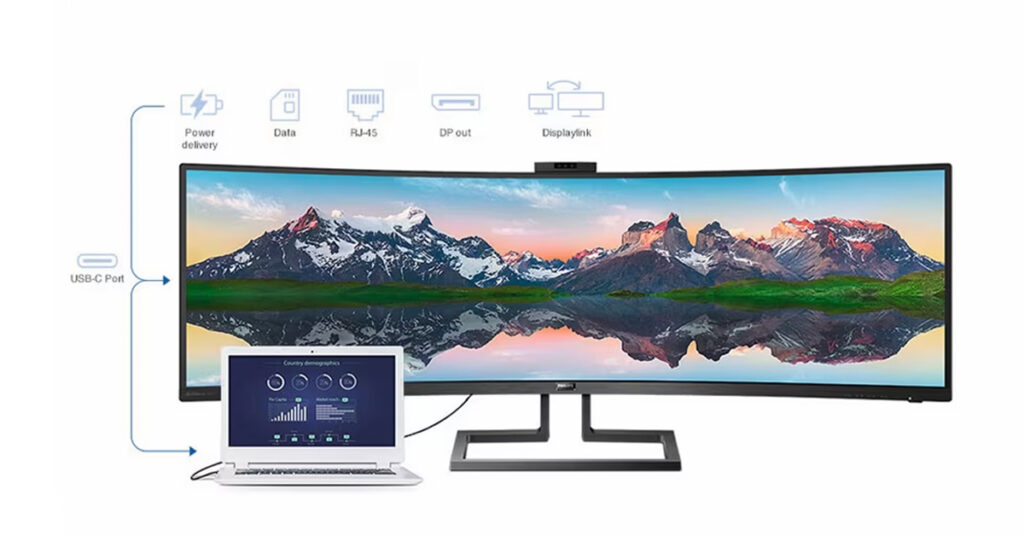USB-C Docking Stations: Is it Better Than a Hub?

As the workplace continues to evolve around us, so does the equipment being used for it. Once an external device with many cables and connections, docking stations are now offered built-in to the monitor with just a singular cord that offers all the traditional features.
To be more specific, docking stations are now offered through USB-C and can deliver anything from power to your device to ethernet connection via RJ-45; depending on the complexity of the docking station. In this article, we will attempt to simplify the complex world of docking stations and give you a clear picture on to why a USB-C docking station might be the best choice for your workplace.
What is the point of a docking station?
The main objective of built-in docking stations is to expand the number of ports on a monitor. This, in turn, lets professionals connect more devices or peripherals without the need to add bulkier external devices in order to improve connectivity. Not to mention, choosing a monitor with a built-in USB docking solution can truly simplify connectivity and overall user experience: Philips’ USB docking solutions offer power delivery of up to 90W or 100W*, data transfer, RJ-45, and Display Port (DP)… out all in one product.
In addition, USB-C docking stations eliminate the need to disconnect and reconnect individual wires – making them the ideal option for offices with a flexible desk layout.
Overall, the point of USB docking stations is that they save time and effort, but also reduce the risk of the working station being inoperable due to damaged or frayed wires.
Is a docking station better than a hub?
Although the terms “USB docking stations” and “hubs” might appear synonyms, they are not.
Both are specifically designed to connect multiple displays and peripherals, but USB docking stations are generally more powerful than a hub. More specifically, they feature more ports than USB-C hubs and more connectivity options.
In addition, a simple USB-C connection can already alter user experience by simplifying cable clutter, but a built-in USB docking solution is designed to be highly powerful and a more suitable option for professionals that need more than a simple monitor-keyboard-mouse set-up. Philips offers various professional line monitors with built-in USB docking stations, USB Docking Pro setups, or a USB-C connection. For more information on all the connectivity options provided, you can check out the B2B section of their site here.
Will a USB-C docking station charge my laptop?
All Philips USB Docking solutions (USB-C, USB Docking, USB Docking Pro) are designed to deliver up to 90 or 100 W of power to your laptop and/or smart devices. In addition, Philips’ monitors are tested to ensure compatibility with a wide range of laptop and phone models, but please always check your PC’s user manual or manufacturer for more details
Do I need a docking station for 2 monitors?
Docking stations simply aid connectivity, and it is easy to daisy chain monitors for a dual or multi-display setup. In the Philips USB Docking Pro feature, for example, monitors are equipped with Displaylink technology which allows users to easily connect multiple monitors to one PC. If you are not familiar with daisy chaining, you can check out this article which gives an in-depth explanation of what daisy chaining is.
Apart from daisy chaining multiple monitors through USB docking solutions, most monitors are also with built-in KVM switch, as it is with the Philips 40B1U6903CH, please refer to the product page here. So, with this model, users can daisy chain their monitors together and also switch between sources for the ultimate, multi-monitor setup.
All in all, USB docking stations are the best option for connecting multiple monitors and reducing cable clutter. For more information regarding monitor connectivity, please visit the Philips professional use collection webpage here.
*Depending on model
